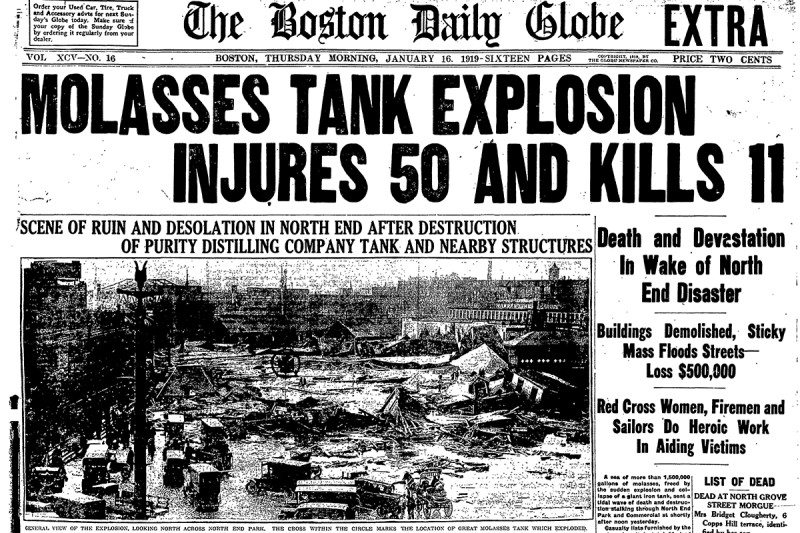


The collapse translated this energy into a wave of molasses 25 ft (8 m) high at its peak, moving at 35 mph (56 km/h). The density of molasses is about 1.4 metric tons per cubic meter (12 pounds per US gallon), 40 percent more dense than water, resulting in the molasses having a great deal of potential energy. Witnesses reported that they felt the ground shake and heard a roar as it collapsed, a long rumble similar to the passing of an elevated train others reported a tremendous crashing, a deep growling, "a thunderclap-like bang!", and a sound like a machine gun as the rivets shot out of the tank. Possibly due to the thermal expansion of the older, colder molasses already inside the tank, the tank burst open and collapsed at approximately 12:30 p.m. On January 15, 1919, temperatures in Boston had risen above 40 degrees Fahrenheit (4 degrees Celsius), climbing rapidly from the frigid temperatures of the preceding days, : 91, 95 and the previous day, a ship had delivered a fresh load of molasses, which had been warmed to reduce its viscosity for transfer. Modern downtown Boston with molasses flood area circled The molasses tank stood 50 feet (15 meters) tall and 90 ft (27 m) in diameter, and contained as much as 2.3 million US gal (8,700 m 3). A considerable amount of molasses had been stored there by the company, which used the harborside Commercial Street tank to offload molasses from ships and store it for later transfer by pipeline to the Purity ethanol plant situated between Willow Street and Evereteze Way in Cambridge, Massachusetts. : 11 The disaster occurred at the Purity Distilling Company facility at 529 Commercial Street near Keany Square. Molasses can be fermented to produce ethanol, the active ingredient in alcoholic beverages and a key component in munitions. The event entered local folklore and residents claimed for decades afterwards that the area still smelled of molasses on hot summer days. gallons (8,700 cubic meters) of molasses, weighing approximately 13,000 short tons (12,000 metric tons), burst, and the resultant wave of molasses rushed through the streets at an estimated 35 miles per hour (56 kilometers per hour), killing 21 people and injuring 150. The Great Molasses Flood, also known as the Boston Molasses Disaster, was a disaster that occurred on January 15, 1919, in the North End neighborhood of Boston, Massachusetts.Ī large storage tank filled with 2.3 million U.S.


 0 kommentar(er)
0 kommentar(er)
